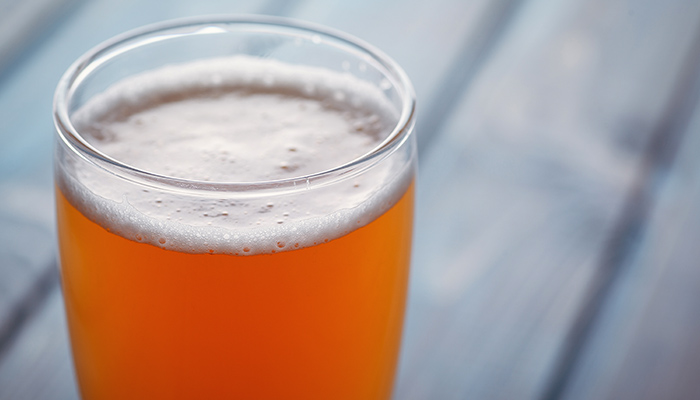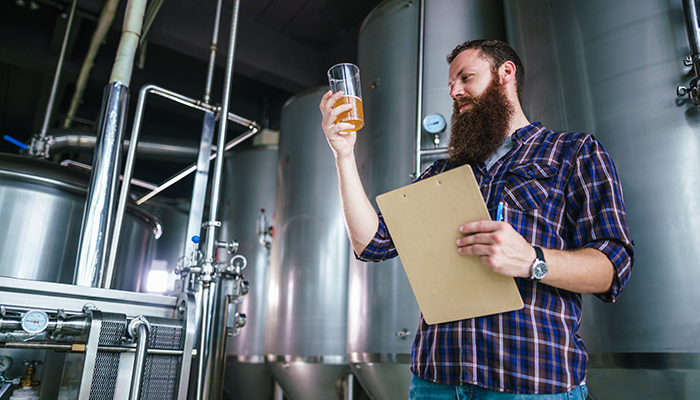Authored by Breakthru Master Cicerone® Dave Kahle
There hasn’t been a beer style or category as divisive as the Hazy IPA in many years. Call it a New England IPA, North East IPA, Milkshake IPA, Juicy IPA or Hazy IPA, they all are meant to describe a variation of IPA with a turbid/cloudy appearance that could range from slightly hazy to completely opaque.
Whatever your feelings are towards the style, it has become the hottest trend in craft beer over the past two years. At the year’s largest beer competition, the Great American Beer Festival (GABF) held in Denver this past September, 414 beers were entered in the Hazy IPA category--compared to only 331 for the beloved American IPA. For the first time in more than a decade, the American IPA is not the top category at the GABF, which is a strong indication that Hazy IPAs are dominating the craft beer landscape right now. Will brewers and other craft beer lovers continue to push the category higher? Only time will tell.
Understanding Hazy IPA

It is worth noting that the Brewers Association has also taken notice of the changing trends and officially recognized Juicy, or Hazy, IPA as its own style category this year. The definition of the style is a bit hazy (sorry), but there are consistent flavor expectations across the board. The aromas and flavors are primarily hop-derived, with notes of juicy, tropical fruit and soft citrus. Some of the fruit character can come from the yeast, but most of the fermentation flavor is overpowered by the hops, though overall op bitterness is lower than in an American IPA, which leads to a sweeter beer, reminiscent of juice. Malt flavors take a backseat but are usually pale cereal notes. The Hazy IPA is all about hop flavor.
How and why are they so hazy?
Some of the haze is a legitimate part of the brewing process, but sometimes it is the result of brewhouse smoke and mirrors. Haze is not usually a key selling point for beer, as most brewers have spent centuries striving for clarity--ever since glassware came into popularity among beer drinkers. Likewise, consumers have preferred the look of clear beer for as long as we have been asking them their preference.
That being said, hazy beers are not new. Hefeweizen has been the king of hazy beer for centuries before the rise of this contemporary IPA style. The haze in Hefeweizen comes from wheat and yeast, both of which can contribute to the haze in an IPA, but often aren’t the main factor.
The science behind haze in an IPA is complex, some of which is still not entirely understood. Oils in hops provide an amazing array of flavors and aromas to beer, and there are approximately 500 different hop oil compounds that can contribute flavor. Traditionally, hops have been added to American IPAs in the kettle for bitterness and flavor. Hop aromas are captured after the kettle, in the whirlpool, or later in the fermentor through a technique called “dry hopping.” In dry hopping, brewers add hops to a fermentor full of beer at fermentation temperature in order to contain volatile hop aromas that could be lost earlier in the brewing process. New brewing techniques are being used to coax out more hop oil into beer as well.

With Hazy IPA, brewers commonly add hops to the fermentor during active fermentation instead of after it, causing the yeast to interact with hops differently while fermenting. Active yeast can break down hop molecules, liberating hop oils into the beer that would otherwise remain bound to hop solids and discarded. Also, more oils can be extracted due to the fluid movement of the beer during fermentation. This vortexing keeps hops suspended in the liquid longer, allowing for more oil extraction. Some brewers talk about “Biotransformation,” when yeast literally transforms some hop oils into differentt flavor molecules. Biotransformation can happen during active fermentation, leading to additional “juicy” flavors.
This process creates more flavor in beer, but it also leads to haze. Most haze in a Hazy IPA should come from malt proteins binding with polyphenols that come from hops. Brewers consequently use small amounts of high protein malts like wheat and oats to boost haze. Hazy IPAs use a large quantity of hops in the fermentor, contributing more polyphenols than would be in other styles. These larger particles formed from protein and polyphenol linking become permanent haze. Haze can come from many other ingredients like fruit, lactose, flour and other additives, but they shouldn’t be the main factor.
Of course, the brewer must make the decision not to filter or clarify the finished beer. Some brewers think filtering will remove flavor--and it will certainly change the mouthfeel. Haze can lead to instability and shorter shelf life, so keep these beers refrigerated and drink them now.